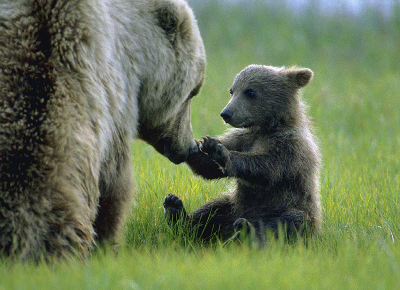
Roadside Foraging in Grizzly Bear Mothers and Cubs
Biology 342, Fall 2014
Tim Peters
Mechanism
What are the mechanisms behind roadside foraging behavior?
One important step in establishing complete understanding of a behavior is to investigate the underlying mechanisms that directly cause the behavior to occur.
Characterizing the proximate mechanisms of a behavior involves a complex assessment of neural and physiological factors contributing to the behavior, many of which are quite difficult to study in far-ranging, uncommon and protected animals such as grizzly bears. The behavior itself is quite rare, and the Greater Yellowstone Ecosystem, home to only ~740 bears [4], is one of very few bear habitats streaked with roads carrying heavy traffic. In short, we do not know what mechanisms drive the young and motherly subset of grizzlies to forage near these busy roads.
Since this behavior is highly specific to mothers, cubs, and subadults, the neural mechanisms underlying roadside foraging may be the same mechanisms involved in maternal care.

Offspring spend years in the care of their mothers before departing to live on their own (f)